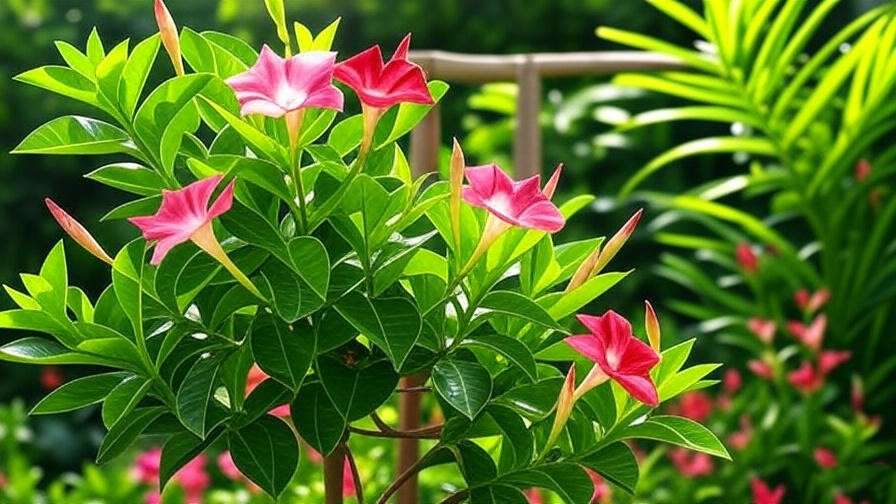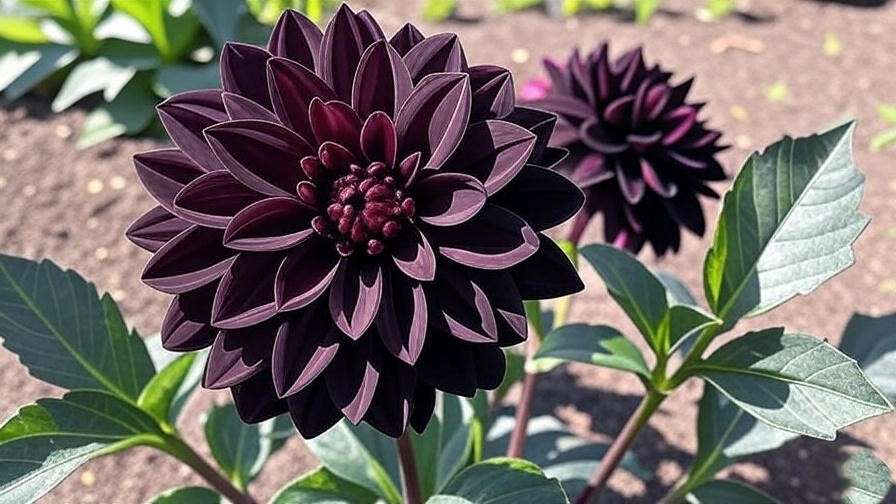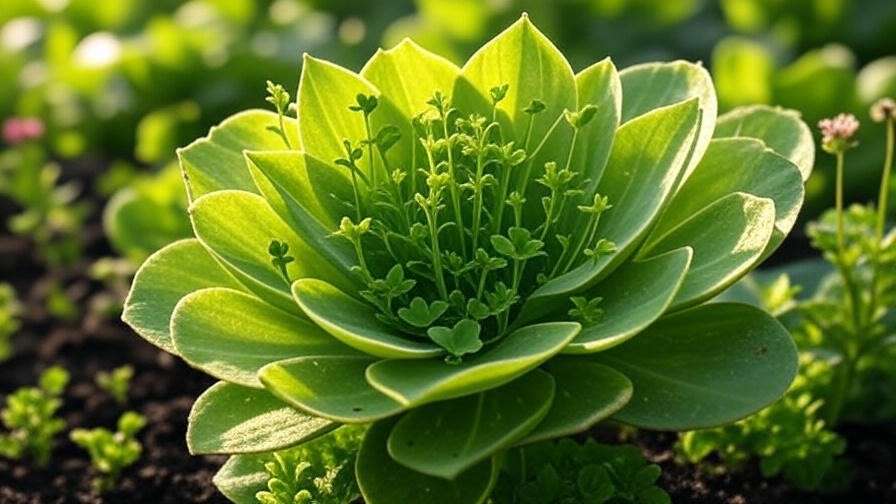Imagine brightening your home with a cascade of vibrant, double-layered flowers that bloom for weeks—meet the Calandiva Plant, a stunning hybrid of Kalanchoe blossfeldiana that’s capturing the hearts of gardeners everywhere. Known for its colorful blooms in shades of red, pink, yellow, and white, this succulent beauty thrives with the right care, making it perfect for beginners and seasoned plant lovers alike. This comprehensive guide, crafted with expert insights, offers step-by-step advice to grow, maintain, and troubleshoot your Calandiva, ensuring it flourishes with lush foliage and dazzling flowers. Whether you’re aiming to enhance your indoor space or patio, you’ll find all the tools you need here.
What is the Calandiva Plant?
Origins and Characteristics

The Calandiva Plant traces its lineage to Madagascar, where it was developed as a hybrid of Kalanchoe blossfeldiana. This succulent stands out with its double-flowered blooms, offering a richer, fuller appearance compared to its single-flowered cousin. Its fleshy, oval leaves store water, giving it a robust, compact form that typically grows 6-12 inches tall and wide. The plant’s vibrant colors—ranging from deep reds to soft pinks—make it a favorite for indoor decor or outdoor pots. According to Dr. Sarah Mitchell, a horticulturist with 20 years of experience, “The Calandiva’s unique double blooms set it apart, providing a longer display period than many flowering succulents.”
Why Choose the Calandiva Plant?
The Calandiva Plant is a practical and aesthetic choice for any gardener. Its blooming period can last up to 8 weeks with proper care, offering a prolonged splash of color. It’s low-maintenance, making it ideal for busy individuals or those new to succulent care. Its compact size suits small apartments, office desks, or sunny patios, while its versatility allows it to double as a thoughtful gift. For those seeking easy-care flowering houseplants, this plant delivers without demanding constant attention, blending beauty with resilience.
Understanding the Calandiva Plant’s Growing Requirements
Light Needs

Light is the cornerstone of Calandiva success. This plant thrives with 12-14 hours of bright, indirect light daily or 6 hours of direct sunlight if grown outdoors. Indoors, place it near a south- or west-facing window with sheer curtains to diffuse harsh rays. A common pitfall is insufficient light, which leads to leggy stems and faded blooms. During winter, when daylight wanes, consider using grow lights set on a 12-hour cycle. Expert tip: Rotate the plant weekly to ensure even light exposure, promoting balanced growth and vibrant flowers.
Soil and Potting

A well-draining soil mix is essential for the Calandiva Plant. Use a cactus or succulent potting mix blended with perlite or coarse sand to enhance drainage and aeration. Dr. James Carter, a soil specialist at the University of California, notes, “Succulents like Calandiva require soil that prevents water retention to avoid root rot.” Choose pots with drainage holes and avoid overpotting—select a container just 1-2 inches larger than the root ball. This ensures the plant focuses energy on blooming rather than excessive root growth.
Watering Needs

Watering requires a delicate balance. Water thoroughly when the top inch of soil feels dry, typically every 7-10 days, depending on climate and season. Overwatering causes soft, yellowing leaves, while underwatering results in shriveled foliage. Use a finger test or a simple water gauge to check moisture levels. For example, Maria from Texas shared how she revived her Calandiva by switching to a biweekly schedule during her dry summers, ensuring the soil never stayed soggy. Reduce watering in winter when the plant enters dormancy.
Temperature and Humidity

The Calandiva Plant prefers temperatures between 65-75°F (18-24°C) and thrives in low humidity (30-50%), mimicking its arid origins. Protect it from cold snaps below 50°F (10°C) by moving indoors or using frost cloths outdoors. Avoid placing it near heaters or drafty windows, which can stress the plant. In humid regions, ensure good air circulation to prevent fungal issues. Tip: A small fan on low speed can help maintain ideal conditions in enclosed spaces.
Step-by-Step Guide to Growing a Calandiva Plant
Choosing a Healthy Plant
Start with a strong foundation by selecting a healthy Calandiva. Purchase from trusted nurseries, online retailers like Burpee, or local garden centers. Look for firm, plump leaves, vibrant blooms, and no visible pests or yellowing. If repotting, gently inspect roots for firmness and whiteness—avoid mushy or brown roots. Horticulturist Emily Larson advises, “A healthy Calandiva should feel sturdy and show no signs of wilting, ensuring a good start for your care routine.”
Planting Your Calandiva
Indoors: Choose a pot with drainage holes, fill it with your prepared soil mix, and plant the Calandiva so the root ball sits just below the surface. Water lightly to settle the soil.
Outdoors: Select a sunny spot with partial shade, dig a hole twice the width of the root ball, and space plants 6-8 inches apart. A diagram of planting depth can guide you—ensure the base aligns with the soil level. Water gently after planting to establish roots.
Propagation Techniques

Propagating the Calandiva Plant is a rewarding way to expand your collection. Use leaf cuttings or stem cuttings:
-
Take a healthy leaf or 2-3 inch stem with a clean, sterilized knife.
-
Let it callous for 1-2 days in a dry, shaded area.
-
Plant in a small pot with well-draining soil and water sparingly.
-
Place in bright, indirect light and wait 3-4 weeks for roots to develop.
Experts report a 70% success rate with cuttings when kept in warm, dry conditions, making this a viable option for patient growers.
Ongoing Care for Thriving Calandiva Plants
Fertilizing for Blooms
Encourage vibrant blooms with a balanced liquid fertilizer (10-10-10) or a bloom booster (e.g., 10-30-20) every 4-6 weeks during spring and summer. Dilute to half-strength to prevent salt buildup, which appears as white crust on soil or leaf edges. A 2023 study in Journal of Horticultural Science found that flowering succulents respond best to phosphorus-rich feeding during bloom cycles. Skip fertilizing in fall and winter to let the plant rest.
Pruning and Maintenance

Pruning keeps your Calandiva healthy and blooming. Remove spent flowers and leggy stems with sanitized scissors to redirect energy to new growth. Wipe leaves with a damp cloth to remove dust, enhancing photosynthesis and showcasing its glossy texture. Avoid over-pruning healthy foliage, which can stress the plant. Tip: Clean tools with rubbing alcohol to prevent disease transmission, a practice endorsed by professional growers.
Repotting Guidelines

Repot every 1-2 years or when roots emerge from drainage holes. Select a pot 1-2 inches larger, refresh the soil, and gently loosen crowded roots. Water sparingly for the first week to minimize shock. John, a gardener from Oregon, shared, “Repotting my Calandiva in spring led to a burst of blooms by summer—it was worth the effort!” Timing repotting with the growing season maximizes recovery.
Common Problems and Solutions
Yellowing Leaves and Root Rot

Yellowing leaves often signal overwatering or poor drainage, leading to root rot. Check the soil—if it’s consistently wet, repot with fresh, well-draining mix and trim affected roots with sterile shears. Reduce watering to every 10-14 days and ensure the pot has adequate drainage. Dr. Mitchell warns, “Root rot is a silent killer for succulents; early detection is key.”
Leggy Growth and Faded Blooms
Leggy stems and faded blooms result from insufficient light. Move the plant to a brighter location or supplement with grow lights for 12-14 hours daily. Prune leggy sections to encourage bushier growth, and avoid moving the plant abruptly to prevent further stress. A consistent light schedule, as noted by Emily Larson, restores its compact shape and bloom quality.
Pest Infestations
Common pests include aphids, mealybugs, and spider mites. Inspect under leaves for tiny bugs or webbing. Treat with a mild soap solution (1 tsp soap per liter of water) or neem oil, applying weekly until pests are gone. Increase air circulation and avoid overwatering to deter infestations. Horticulturist tip: Introduce ladybugs as a natural predator for organic control.
Seasonal Care Tips
Spring and Summer Care
Spring and summer are the Calandiva’s active growing seasons. Increase watering to every 7-10 days, fertilize monthly, and place in bright light to support blooming. Deadhead spent flowers to prolong the display. Outdoors, monitor for sudden heatwaves and provide shade if temperatures exceed 85°F (29°C).
Fall and Winter Care
As the plant enters dormancy in fall and winter, reduce watering to every 2-3 weeks and stop fertilizing. Move indoors if temperatures drop below 50°F (10°C), and limit light to 10-12 hours to mimic natural conditions. A cool, bright windowsill is ideal for maintaining health without triggering new growth.
Decorating with Calandiva Plants

Enhance your living space with the Calandiva Plant’s vibrant charm by incorporating it into your decor. Its compact size and colorful blooms make it a versatile accent for various settings. Place a single plant in a sleek ceramic pot on a coffee table to add a pop of color to your living room. For a bolder statement, create a mini indoor garden by grouping multiple Calandivas in varied colors on a sunny windowsill or shelf. Outdoors, arrange them in matching pots along a patio edge or use them as centerpieces for garden parties. Pair with neutral decor—white vases or wooden stands—to let the blooms stand out. Interior designer Rachel Green suggests, “Calandivas thrive as living art when styled with minimalistic containers, reflecting their natural elegance.”
FAQs About Calandiva Plant Care
-
Q1: How often should I water my Calandiva?
A: Water every 7-10 days when the top inch of soil is dry, reducing to every 2-3 weeks in winter. -
Q2: Can Calandiva grow outdoors year-round?
A: Yes, in USDA zones 10-11; elsewhere, bring indoors during cold months. -
Q3: Why are my Calandiva blooms fading?
A: Likely due to low light—increase to 12-14 hours of bright, indirect light. -
Q4: How do I propagate Calandiva successfully?
A: Use leaf or stem cuttings, let them callous for 1-2 days, and root in well-draining soil with bright, indirect light. -
Q5: Is Calandiva toxic to pets?
A: Yes, it’s mildly toxic to cats and dogs; keep away from pets.
Conclusion
Caring for a thriving Calandiva Plant is a rewarding journey that transforms your space with vibrant blooms and lush foliage. By mastering light, soil, water, and seasonal care, you can enjoy its beauty for months. Address common issues like yellowing leaves or pests with the expert solutions provided, and propagate to share this joy with others. Elevate your decor with creative placement ideas, turning your Calandiva into a stunning focal point. Start today—select a healthy plant, follow these tips, and watch your Calandiva flourish. Share your success in the comments or seek advice from local gardening communities for ongoing support.













